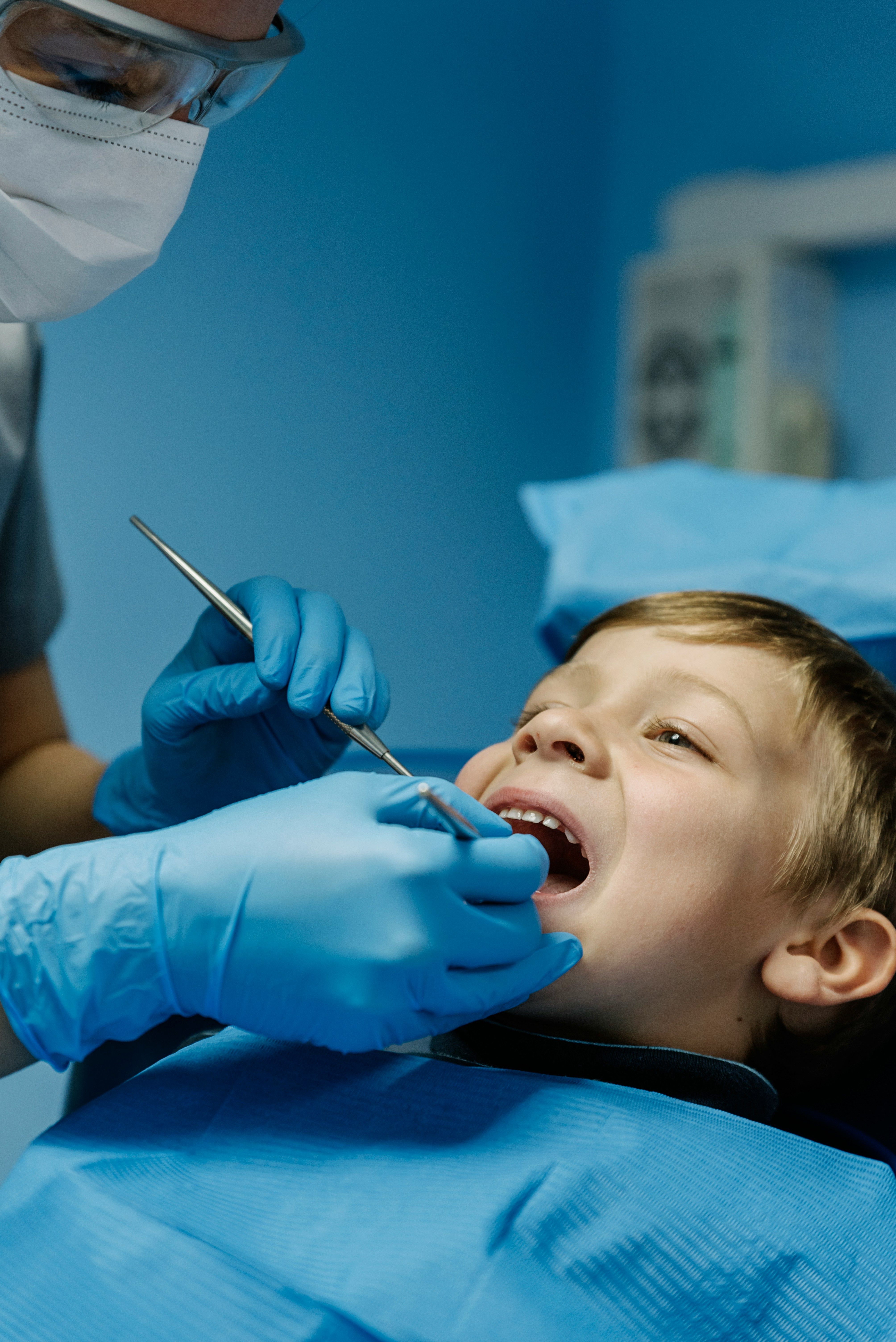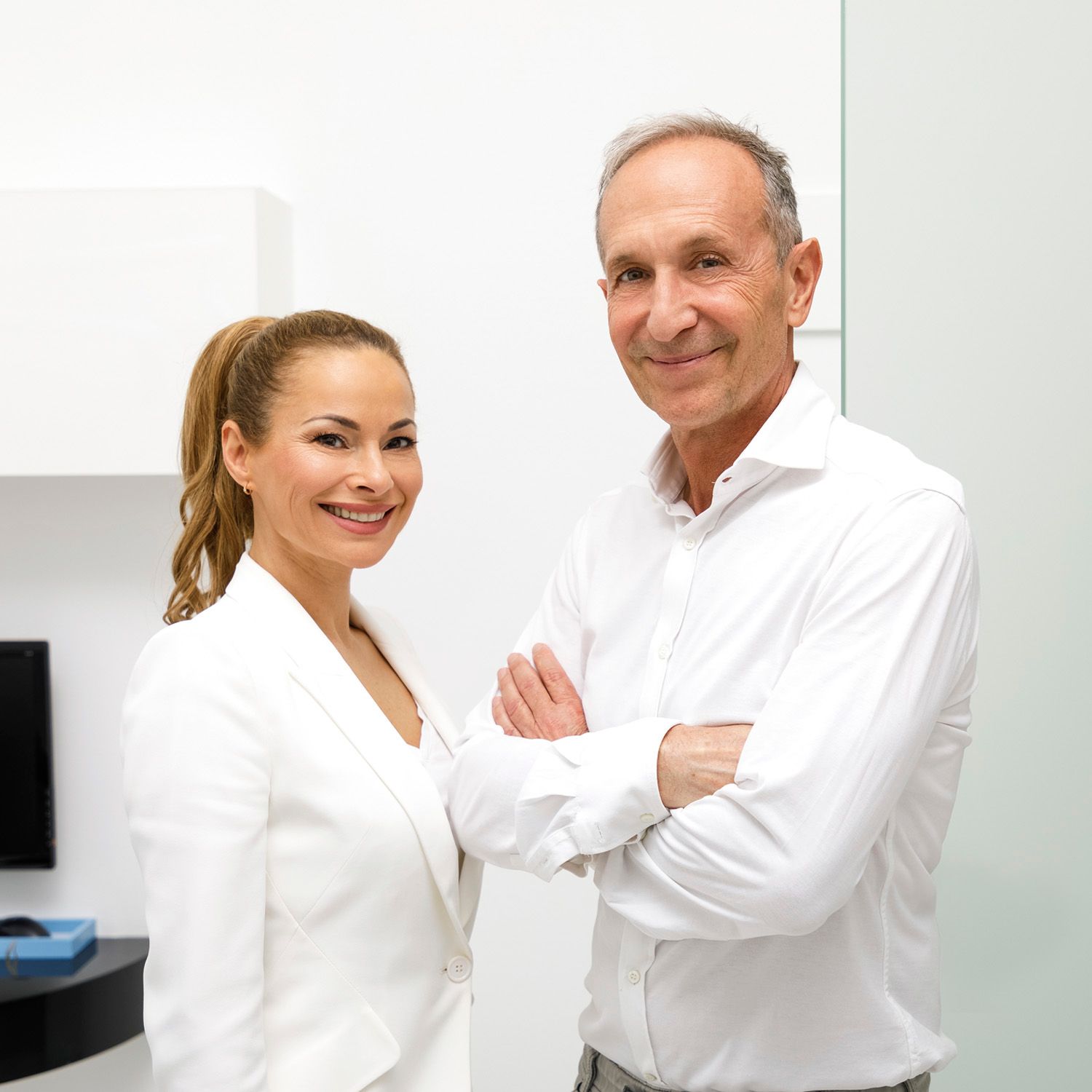Other Treatment Methods
- Dental anxiety / pain-free dental treatment
- Dental prosthesis
- Digital dentistry
- Gum treatment
- Orthodontics
- Pediatric dentist
- Prophylaxis / Professional Teeth Cleaning (PZR)
- Root canal treatment / Endodontics
- Sports dentistry
- Teeth grinding and CMD (Craniomandibular Dysfunction)
- Teeth whitening / Bleaching
- Veneers (dental shells)

Pediatric dentist
The dental and orthodontic treatment of children requires a high degree of psychological skill and empathy from the dentist, especially when the little ones are anxious or make the therapy more difficult for other reasons or refuse it. Premium dentists therefore involve the parents before the treatment begins, provide tips for successful preparation for the dentist visit, and get an idea of the behavior patterns of their young patients.
Preparing for the visit to the pediatric dentist
Children up to the age of seven in particular easily lose shyness and resistance to the unfamiliar situation in the treatment chair when they first get to know and practice dealing with the unfamiliar scenario in a playful manner. Parents can attune them to this through small role-plays at home, which then avoid later stressful situations. Phrases like "It doesn't hurt" or "You don't need to be afraid" are taboo, instead, curiosity and interest in healthy teeth should be awakened.
The practice team is grateful when, thanks to relevant information from the parents, it can adjust to the child's individual needs and thus organize a child-friendly treatment process. A relaxed atmosphere, friendliness, explaining unfamiliar noises and equipment, and being understanding of children's questions are taken for granted. Pressure or even coercion, possibly associated with the perception of pain, could have fatal effects on the child's psyche and even possibly a lifelong dentist phobia. Dentist phobia as a consequence.
Treatment of milk teeth
Even though they only represent a "temporary solution", proper care and possibly necessary competent treatment of milk teeth are of great importance for the quality of the later set of teethSpecial prophylaxis programs for young children, especially in the period up to school entry, provide parents with comprehensive support. Medical measures such as fissure sealing ensure reliable protection against caries. If there are indications of or impending malformations of teeth and jaw, an Kieferorthopäde is included in the treatment, as a matter of course.
Painless treatment at the pediatric dentist
Less complex caries treatments can generally be carried out with a light but effective local anesthetic. A fruit-flavored gel applied beforehand makes the puncture of the tip no longer noticeable.
Anesthesia at the pediatric dentist
For more complex procedures and for very restless children, a normal local anesthesia may not be an ideal approach. General anesthesia, on the other hand, is often not necessary for medical reasons alone. For many parents, the thought of seeing their child helpless with consciousness turned off is a nightmare scenario. However, modern pediatric dentistry has a variety of graduated methods for Pain elimination, which can be used as needed.
Gentle sedation for children
A calming syrup that relaxes and at the same time minimizes the feeling of anxiety is recommended for minor procedures and restless or uncooperative children. The so-called Dormicum works after about 20 minutes and usually also blurs the memory of the treatment. feeling of anxiety is recommended for minor procedures and restless or uncooperative children. The so-called Dormicum works after about 20 minutes and usually also blurs the memory of the treatment.
Nitrous oxide at the pediatric dentist
Easy to use, effective and without side effects: Pain elimination and sedation with nitrous oxide is a proven standard in the dental treatment of children. The European Academy of Pediatric Dentistry considers the use of nitrous oxide in children from the age of four to be useful.
Twilight sleep for children
The combination of local anesthesia and a sedative, the so-called analgosedation, spares the child's organism much more than a full anesthesia. The fast-acting sedative is administered intravenously. The measure and the complete monitoring of the patient is the responsibility of an anesthetist.
General anesthesia at the pediatric dentist
This method should only be used in exceptional cases in dental treatment of children. Apparatus such as ventilators and tubes must be available in child-friendly design, and the anesthetist should have sufficient experience with pediatric anesthesia.
Hypnosis at the dentist for children
Inducing a state of trance requires no artificial aids, but special skill and experience from the doctor. If these conditions are met, the child's imagination is purposefully activated and the small patient goes on a dream journey that makes him forget everything else around him.
Other Treatment Methods in this Department
Experts for this Treatment Method

- Aesthetics & Function in Dentistry
Dr. Dr. Ákos Fehér
Fehér Dental Team, Smile Lounge
- Aesthetics & Function in Dentistry
Dr. med. dent. Malte Schönrock M.Sc., M.Sc.
Dent Aesthetic
- Aesthetics & Function in Dentistry
Jan Kurtz-Hoffmann
Zahnärzte im Roßbachpalais
- Aesthetics & Function in Dentistry
Dr. med. dent. Tore Thomsen
Zahnarztpraxis Dres. Thomsen & Kollegen
- Aesthetics & Function in Dentistry
Dr. med. dent. Oliver Brendel
Dinkelacker & Brendel
- Aesthetics & Function in Dentistry
Dr. med. dent. Nico Lindemann
Zahnärzte im RoßbachpalaisAll Experts in this Department
Show All
- Aesthetics & Function in Dentistry
Dr. Dr. Ákos Fehér
Fehér Dental Team, Smile Lounge
- Aesthetics & Function in Dentistry
Dr. med. dent. Malte Schönrock M.Sc., M.Sc.
Dent Aesthetic
- Aesthetics & Function in Dentistry
Jan Kurtz-Hoffmann
Zahnärzte im Roßbachpalais
- Aesthetics & Function in Dentistry
Dr. med. dent. Tore Thomsen
Zahnarztpraxis Dres. Thomsen & Kollegen
- Aesthetics & Function in Dentistry
Dr. med. dent. Oliver Brendel
Dinkelacker & Brendel
- Aesthetics & Function in Dentistry







